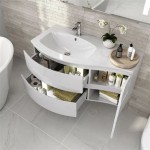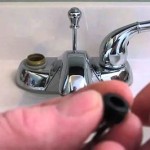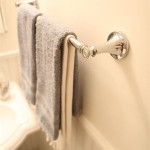What Causes Gnats in a Bathroom?
The unwelcome presence of gnats in a bathroom is a common household problem that can be frustrating and unhygienic. While often conflated with fruit flies, gnats encompass several small fly species attracted to moist environments and decaying organic matter. Understanding the specific causes of gnat infestations in bathrooms is crucial for effective prevention and elimination.
Gnats, in the context of bathroom infestations, typically refer to drain flies (also known as moth flies or filter flies), fungus gnats, or phorid flies. Each species exhibits distinct behaviors and preferences, but they share a common need for damp conditions and organic material to breed and thrive. Identifying the specific type of gnat present is the first step in implementing targeted control measures. A closer inspection of their size, shape, and behavior may assist in identification. Additionally, examining the areas where the gnats congregate most frequently can provide clues about their breeding source.
Bathrooms provide ideal breeding grounds for gnats due to the consistent availability of moisture from sinks, showers, and toilets. Leaky pipes, standing water in shower stalls, and poorly ventilated areas contribute to the dampness that attracts these pests. In addition, the organic matter that accumulates in drains, such as hair, soap scum, and food particles, provides a rich food source for gnat larvae. Understanding these contributing factors is essential for developing a comprehensive gnat control strategy.
Drain Flies and Their Affinity for Bathroom Drains
Drain flies, belonging to the family Psychodidae, are small, fuzzy insects that resemble tiny moths. They are often observed fluttering weakly near drains, sinks, and toilets. Their prevalence in bathrooms is directly related to their breeding habits. Drain flies lay their eggs in the gelatinous film that lines the inside of drains and pipes. This biofilm consists of decaying organic matter, bacteria, and fungi, providing an ample food supply for the developing larvae.
The life cycle of a drain fly is relatively short, typically lasting between two to three weeks. The female drain fly can lay up to 300 eggs at a time, further exacerbating the infestation. The eggs hatch into larvae, which feed on the organic matter within the drain. After approximately two weeks, the larvae pupate and eventually emerge as adult flies. This rapid life cycle allows drain fly populations to proliferate quickly, especially in environments with abundant food and moisture.
Factors that contribute to drain fly infestations include infrequent drain cleaning, leaky pipes that provide constant moisture, and the accumulation of hair and soap scum in drains. Infrequent use of drains can also allow organic matter to accumulate undisturbed, creating an ideal breeding ground. Identifying and addressing these underlying issues is essential for preventing drain fly infestations.
Detecting drain flies typically involves observing their presence near drains and sinks, especially in the evening when they are most active. Inspecting the drain openings for signs of larvae or pupae is another method of confirming their presence. A simple test to determine if drains are the source of the infestation involves covering the drain opening with clear tape overnight. If drain flies are emerging from the drain, they will become trapped on the tape, providing visual confirmation.
Fungus Gnats and Their Attraction to Overwatered Plants
Fungus gnats, belonging to the families Sciaridae, Mycetophilidae, and others, are small, dark-colored flies that are often mistaken for fruit flies. While they are commonly associated with houseplants, they can also infest bathrooms, especially those with potted plants or damp areas where fungi can grow. Fungus gnat larvae feed on fungi and decaying organic matter in the soil, making overwatered plants a prime breeding ground.
The life cycle of a fungus gnat is similar to that of drain flies, with a relatively short duration of approximately three to four weeks. The female fungus gnat lays her eggs in moist soil or potting mix. The eggs hatch into larvae, which feed on fungi and decaying plant matter. After about two weeks, the larvae pupate and emerge as adult flies. The adults are attracted to light and are often seen flying near windows or light fixtures. They can also be seen hovering around plants, especially those with damp soil.
Bathrooms with houseplants are particularly susceptible to fungus gnat infestations. Overwatering plants creates a consistently moist environment that favors the growth of fungi and the development of fungus gnat larvae. In addition, potting mixes that are rich in organic matter provide an abundant food source for the larvae. Even without houseplants, fungus gnats can establish themselves in bathrooms if there are damp areas where fungi can grow, such as under sinks, behind toilets, or in shower stalls.
Preventing fungus gnat infestations involves proper watering practices for houseplants, ensuring adequate drainage, and avoiding the buildup of damp areas in the bathroom. Allowing the top layer of soil to dry out between waterings can help to reduce the moisture content and discourage fungus growth. Using well-draining potting mixes and providing adequate ventilation can also help to prevent infestations. In addition, removing any decaying plant matter from the bathroom can eliminate a potential food source for fungus gnat larvae.
Detecting fungus gnats typically involves observing their presence near plants or in other damp areas of the bathroom. Inspecting the soil surface for signs of larvae or adult flies is another method of confirming their presence. Sticky traps placed near plants can also help to capture adult flies and monitor the infestation.
Phorid Flies and Their Association with Decomposing Organic Matter
Phorid flies, also known as humpbacked flies or coffin flies, are small, yellowish-brown flies that are often attracted to decaying organic matter. While they are less common in bathrooms than drain flies or fungus gnats, they can infest these areas if there is a source of decaying organic material present. Phorid flies are known for their erratic, darting flight pattern and their ability to reproduce in a wide range of environments.
The life cycle of a phorid fly is relatively short, typically lasting between two to four weeks. The female phorid fly lays her eggs in decaying organic matter, such as rotting food, sewage, or even dead animals. The eggs hatch into larvae, which feed on the organic matter. After about two weeks, the larvae pupate and emerge as adult flies. Phorid flies are attracted to a variety of odors, including those from decaying organic matter, sewage, and garbage.
In bathrooms, phorid flies can be attracted to leaks under sinks or toilets that create consistently damp areas. They can also be attracted to sewage backups or spills, or even to decaying organic matter trapped in drains or under floorboards. In rare cases, they can even be associated with leaks from improperly sealed plumbing or drainage systems originating from outside the building.
Preventing phorid fly infestations involves eliminating sources of decaying organic matter and addressing any leaks or moisture problems in the bathroom. Cleaning up spills promptly, repairing leaky pipes, and ensuring proper sewage disposal are essential steps. Inspecting the bathroom for any potential sources of decaying organic matter, such as rotting food or dead insects, can also help to prevent infestations. Sealing cracks and crevices in walls and floors can help to prevent phorid flies from entering the bathroom.
Detecting phorid flies typically involves observing their presence near potential sources of decaying organic matter. Inspecting drains, sinks, and toilets for signs of sewage backups or leaks is another method of confirming their presence. Sticky traps placed in areas where phorid flies are observed can help to capture adult flies and monitor the infestation.
In addition to identifying the specific type of gnat, understanding the broader environmental conditions that contribute to their presence is crucial for effective control. Humidity, temperature, and the availability of food sources all play a role in gnat infestations. Reducing humidity levels in the bathroom through proper ventilation can make the environment less appealing to gnats. Maintaining a clean bathroom and removing any potential food sources can also help to prevent infestations.
Addressing the root cause of the infestation is always the most effective approach. Simply killing the adult gnats will provide only temporary relief, as the larvae will continue to develop and repopulate the area. Targeting the breeding source is essential for long-term control. This may involve cleaning drains, repairing leaks, adjusting watering practices for plants, or removing sources of decaying organic matter.
Professional pest control services can provide effective solutions for severe or persistent gnat infestations. Pest control professionals have the knowledge, experience, and equipment to identify the specific type of gnat present, locate the breeding source, and implement targeted control measures. They can also provide advice on how to prevent future infestations.
In summary, the presence of gnats in a bathroom is often attributed to a combination of factors, including moisture, organic matter, and inadequate sanitation. Understanding the specific behaviors and preferences of drain flies, fungus gnats, and phorid flies is crucial for developing a targeted control strategy. By addressing the underlying causes of the infestation and implementing preventative measures, it is possible to eliminate gnats from the bathroom and maintain a healthy and hygienic environment.
How To Get Rid Of Gnats Drain Flies Fruit And Fungus
Jab Plumbing Solutions Blog Blocked Drain Plumbers

How To Rid Of Drain Flies Forbes Home

How To Get Rid Of Drain Flies

Fungus Gnats Arnold Zwicky S Blog

Drain Fly Facts What Causes Them How To Identify More

How To Get Rid Of Drain Flies Rt Olson Plumbing

The Simple Trick To Stop Pesky Gnats From Taking Over Your Drains

4 Simple Ways To Eliminate Drain Flies A Better Plumber

How To Get Rid Of Gnats For Good
Related Posts







